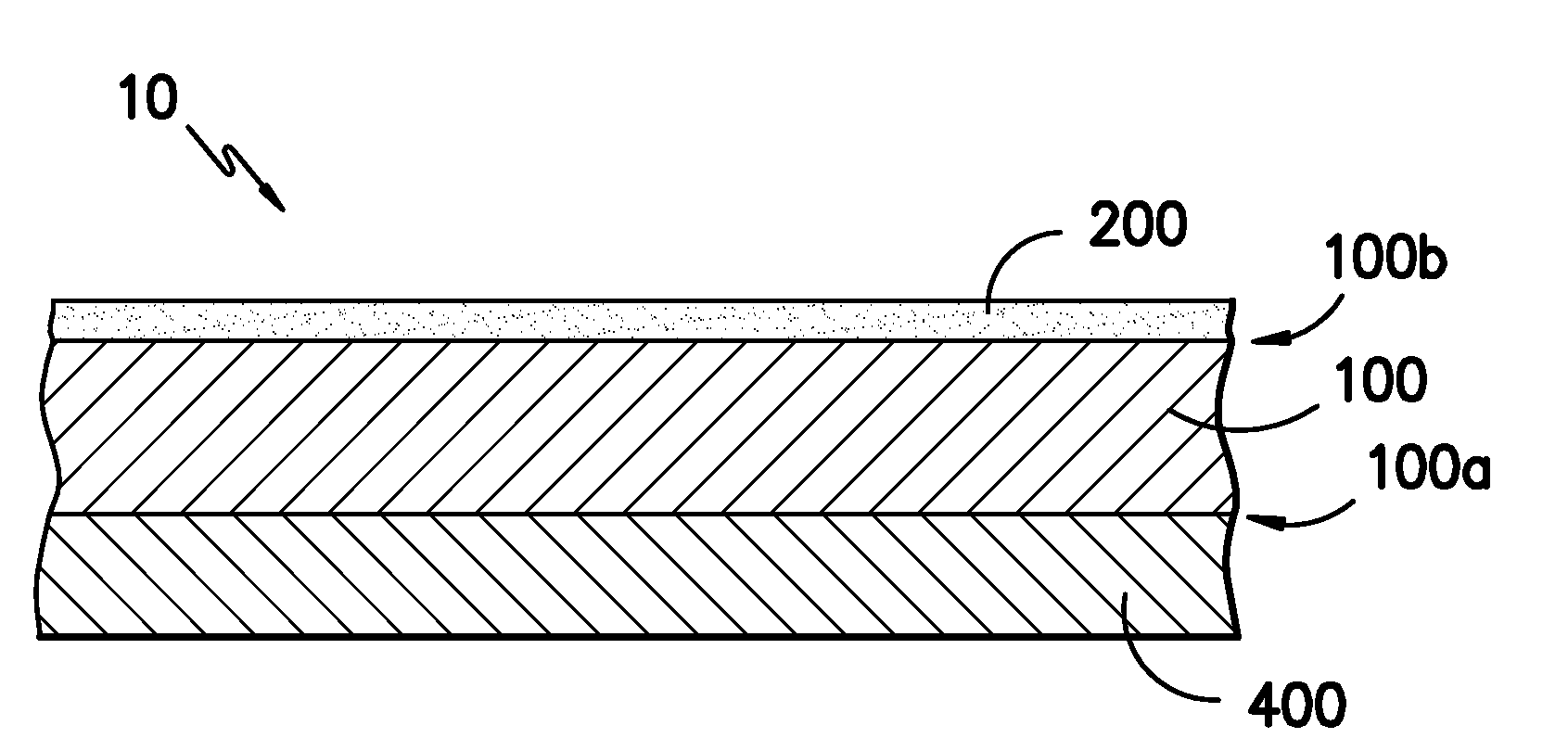Filter for Removal of Heavy Metals
a technology of heavy metals and filters, applied in the direction of dispersed particle separation, separation processes, chemistry apparatuses and processes, etc., can solve the problems of increasing the amount of fly ash waste produced, affecting the development of fetuses and young children, and destroying forests, fisheries and buildings
- Summary
- Abstract
- Description
- Claims
- Application Information
AI Technical Summary
Benefits of technology
Problems solved by technology
Method used
Image
Examples
example 1
[0052]A foamed mixture was formed by blending,[0053]40 grams of RF264-C, a 40% solid activated carbon fine powder dispersion from Apexical,[0054]2 grams Daikin Unidyne TG 5601, a fluorocarbon repellent emulsion,[0055]5 grams NaBr[0056]38 grams of Polon MF-56, a silicone resin emulsion from Shin-Etsu, as a binder and a hydrophobic agent[0057]3 grams of Unifroth 529, a foaming agent and[0058]15 grams, deionized water
[0059]The foamed mixture was scrape-coated on one side of a 100% PPS (polyphenylene sulfide) nonwoven and a 100% PET (polyester) nonwoven, which were each then dried in a convection oven at about 320° F. The silicone polymer served as a binder, a heat protective coating for the PET and PPS fibers, and a repellent against condensation of exhaust contaminants such as water, SO3 or sulfuric acid, to allow the activated carbon to be free of liquid condensation and to allow maximal chance for it to adsorb mercury and organic contaminants. A propane lighter was used to test the ...
example # 2
Example #2
Prophetic
[0061]The formulation described in example 1 can be used to coat or impregnate a knit fabric to form a treated knit fabric. The fabric can be made into a stretchable tube or other structure which can be easily fitted over an existing filter bag or pleated filter. The knit fabric can also be easily removed from the exist filter. In a reverse air filter bag configuration, for example, the knit tube can be fitted on the outside an existing glass fiber filter bag, to provide mercury adsorption capability. Since the dust particles and cake typically are captured inside the bag, the knit fabric tube is protected from dust buildup. The knit fabric tube can also be easily removed after use.
[0062]The knit fabric substrate can be made from any fiber or fiber blends depending on the specific end use environments. For example, polyester, PPS, aramid, polyoxadiazole, FR rayon, glass fiber and any blends thereof, may be used to construct the knit fabric.
example # 3
Example #3
Prophetic
[0063]Similar to Example 2, a woven or nonwoven fabric can be impregnated with the coating described in example #1. The treated woven or nonwoven fabric can be stitch bonded or laminated to a conventional filter medium to provide mercury adsorption capability. The fabric can also be used as a separate liner layer, an insert, or a sleeve in a filtration apparatus. In another embodiment, the treated filtration medium may be used synergistically in combination with the ACI process, where the activated carbon used in ACI is preferably brominated. The bromine agent used with the activated carbon may be further captured or adsorbed on the filtration medium to further improve the efficiency of mercury oxidation. The filtration medium can be further laminated with a filtration membrane such as expanded PTFE member. Treatment of the membrane with at least one of the above treatment composition is also conceived. Used filter of the invention may be further treated or washed...
PUM
| Property | Measurement | Unit |
|---|---|---|
| temperature | aaaaa | aaaaa |
| thickness | aaaaa | aaaaa |
| thickness | aaaaa | aaaaa |
Abstract
Description
Claims
Application Information
 Login to View More
Login to View More - R&D
- Intellectual Property
- Life Sciences
- Materials
- Tech Scout
- Unparalleled Data Quality
- Higher Quality Content
- 60% Fewer Hallucinations
Browse by: Latest US Patents, China's latest patents, Technical Efficacy Thesaurus, Application Domain, Technology Topic, Popular Technical Reports.
© 2025 PatSnap. All rights reserved.Legal|Privacy policy|Modern Slavery Act Transparency Statement|Sitemap|About US| Contact US: help@patsnap.com


